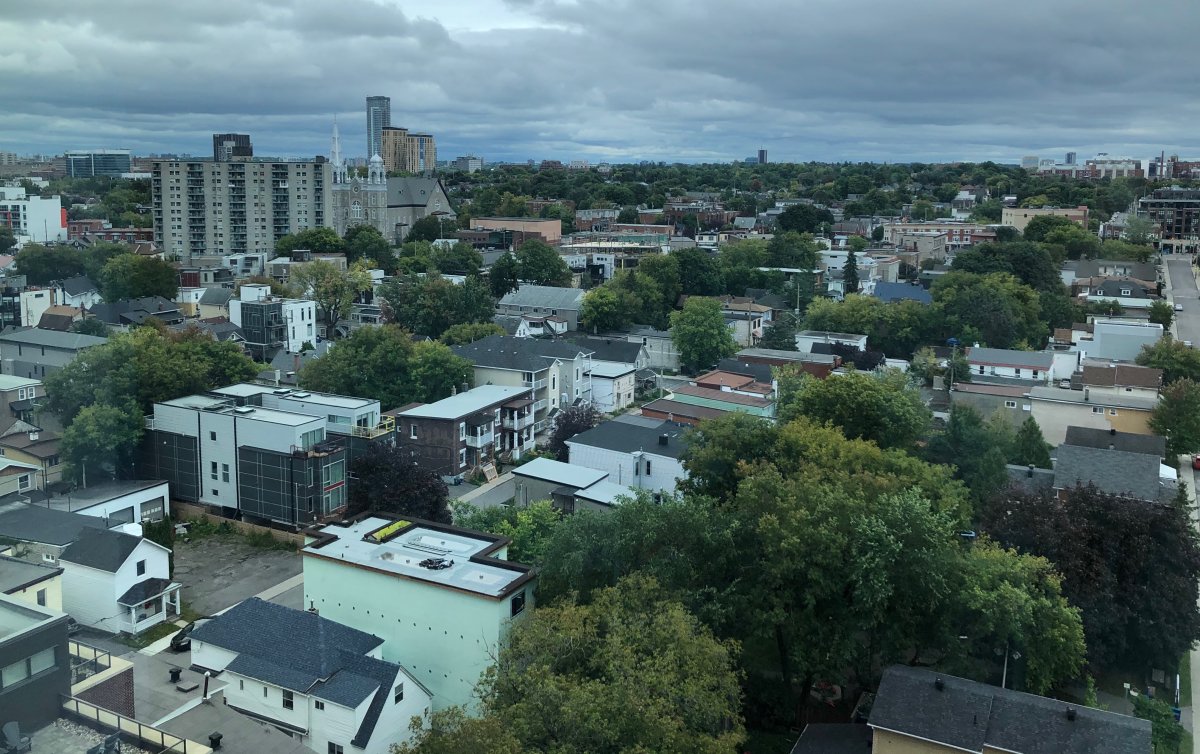A bylaw change meant to promote intensification in Ottawa’s urban neighbourhoods is sparking concerns about streets full of “monolithic facades” from residents and councillors in these areas.

Ottawa’s planning committee gave the green light Thursday to changes to the city’s R4 zoning designation after four hours of debate, delegations and questions to the city’s planning staff.
The R4 question is an important policy piece for Ottawa’s long-term development planning.
Ottawa is in the midst of its Official Plan review, which will dictate overarching development priorities for the city. After these principles are set in stone, more areas around the city might be rezoned R4.
Low-rise intensification permitted in R4 is seen as a chance to satisfy the “missing middle” of housing in Ottawa, where higher-density multi-family residences can be integrated next to single-family abodes in walkable, sustainable neighbourhoods.
And denser neighbourhoods are a must-have in the decades to come, as city council voted to adopt a policy of 60-percent growth via intensification by 2046 during the urban boundary expansion debate earlier this year.
But the current form of R4 zoning has actually been counterproductive to intensification, city staff say.
Its minimum lot size requirements are too large for most existing R4 lots to practically build low-rise apartment buildings and an artificial cap on the number of units in these buildings often results in oversized and expensive units in the final housing product.
The proposed changes in R4 zoning would see the maximum number of units per lot increased from the current four to maximums of eight or 12, depending on the specific zoning.
It would also reduce the minimum lot size needed for a low-rise apartment to 300 square metres, which staff deemed sufficient for on-site waste collection, bicycle parking and green space requirements.
The new R4 would also put a prohibition on parking lots on any such site.

Most residents and councillors who spoke at Thursday’s planning committee were largely in favour of density, but speakers from neighbourhoods such as Overbrook and Hintonburg — where R4 zoning already covers a significant proportion of the lots — expressed concern about particular concessions seemingly made to achieve that intensification.
Among the changes proposed in the R4 rezoning report is a requirement that 20 per cent of a low-rise building’s facade must be set back by 0.6 metres, or about two feet.

Get weekly money news
Previous versions of the R4 zoning had these setback standards at 1.5 metres with front-facing balconies listed as another requirement.
Representatives of the Greater Ottawa Home Builders Association (GOHBA) said in the staff report that this degree of setback would be “tricky” on narrower lots and “eat up a lot of floor space.”
This articulated approach to design would have helped to avoid a series of box-like apartment buildings lining the side streets of neighbourhoods, Hintonburg residents such as Jay Baltz said.
Kitchissippi Coun. Jeff Leiper, whose ward includes Hintonburg, echoed his residents’ concerns of “monolithic facades” popping up in the neighbourhood, which is already a popular target for infill development.
“I am very fearful for areas such as Hintonburg that are overloaded with R4,” said Sheila Perry, president of the Federation of Citizens Association.
David Wise from the city’s planning, infrastructure and economic development team attempted to assuage concerns that the proposed changes to R4 zoning would result in apartment buildings that don’t match the character of the neighbourhoods they’re in.
He said the city has other powers through site plan control and design review to “dress the box” and avoid the “monoliths” the delegations and councillors are concerned about. Wise also highlighted minimum requirements for windows in new developments that could help differentiate the character of buildings.
Leiper also expressed concerns that language in the staff report surrounding the “intent of the zoning” was “vague” and subject to overrule by any builder looking to skirt the minimum lot or setback requirements at the committee of adjustment.
Wise countered by saying that the guidance to the committee is above and beyond what is usually in zoning bylaws. He said zoning is a rather “blunt” tool that should not be used to dictate finer points of site plan and design, and that other materials such as the city’s solid waste master plan are better equipped with specific details to address those applications for variances.
Murray Chown, chair of GOHBA’s urban infill council, told planning committee that members of the builders’ association had “some reservations” about the proposed R4 changes but, overall, were prepared to “wait and see how this plays out.”
He expressed some dissatisfaction with the parking prohibitions and added that GOHBA’s suggestion of permitting a parking spot at the front of the building “continues to fall on deaf ears.”
River Coun. Riley Brockington shared similar concerns surrounding parking and suggested he might propose amendments to the rezoning proposal before it rises to council for approval on Sept. 23.
Somerset Coun. Catherine McKenney said Thursday that increasing the stock of rental units available is one step towards solving Ottawa’s housing affordability crisis, but it does not guarantee that these units will be affordable themselves.
Zoning bylaws alone cannot dictate the affordability of rents, city staff say, but inclusionary zoning can be legislated through Ottawa’s Official Plan process.
The City of Ottawa announced elsewhere Thursday that it would receive a $167.9-million mortgage from the federal government’s National Housing Strategy, a program announced in the 2017 budget.
From that funding, 698 housing units will be constructed, with roughly 200 earmarked for affordable rents.
The previously announced Gladstone Village and Rochester Heights developments will be partially funded through the federal loan.









Comments